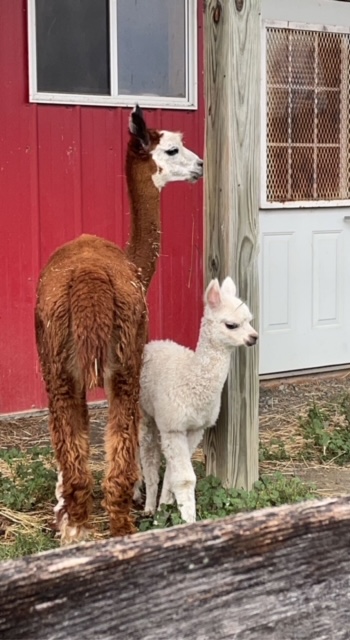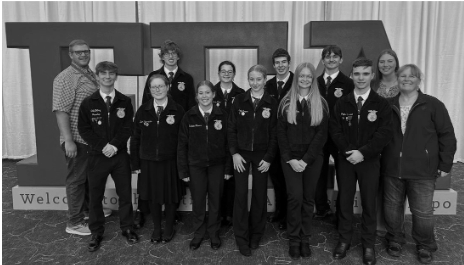New arrival at North Harford; Baby alpaca steals hearts.
September 24, 2021
A new member of the North Harford High School Agricultural program has been added to the barn. Inside of the livestock barn, an all-white alpaca is found being cared for by North Harford students and staff of the Agricultural program.
Mrs. Erika Edwards, agricultural teacher, explains that “Auggie was born on August 19, 2021.” At the age of one month, Auggie is living with his mother and another male alpaca. Although he is quite young, no new or unique practices are being used to care for him at this time.
Connected to the Livestock barn, Auggie has a pasture where he is accompanied by his mother Zoe. Currently, Zoe and her baby are separated because she and the male alpaca, Bert, are overprotective of Auggie when together.
Auggie’s mother, Zoe, came from Pam Purce, the owner of Three Oaks Farm in Forest Hill. Senior Tiffany Williams said, “Zoe was very skinny to the point where her spine was visible,” when she first came to the North Harford barns. With proper nutrition to put on weight, it was then visible that Zoe had been pregnant, which was originally unknown.
Edwards said, “Zoe was bred almost a year ago, before she arrived at North Harford last spring.” Alpacas have a gestation or pregnancy period of eleven months. When born, alpacas can weigh anywhere between 15 and 19 pounds.
Llamas and alpacas are commonly confused for each other. Although very similar, note llamas are larger than alpacas and can reach around 400 pounds, according to the 4-H Animal Science Resource Blog.
Many students mistake the male alpaca, Bert, to be the father of Auggie. Although Bert is not the father, Williams notes “Bert is protective over the baby.” The protective behavior of both Zoe and Bert means that North Harford students must act carefully when approaching and interacting with Auggie.
When associating with the baby alpaca, Auggie is described as “very curious,” by Williams. Auggie will cock his head when students approach and attempt to pet him. Other unique characteristics of Auggie include random spurts of energy.
Williams also says, “Auggie spontaneously jumps around and bucks” while being interacted with.
Because of Auggie’s young age, students and staff must practice specific methods when associating with him. Williams said “you must approach him subtly to touch him,” otherwise Auggie can be easily spooked. Lowering your body position near Auggie is another way to make humans seem less intimidating to him.
While students are caring for the animals in the Livestock barn, they work on socializing with Auggie, so he becomes familiar with people and stays friendly. Coming towards Auggie too fast or aggressively may frighten him, as he is learning to interact with humans.
Auggie’s diet consists of breastfeeding milk from his mother and Williams said “grass and hay are available to him while he is in his stall or out in the pasture.” This is a balanced diet for a growing alpaca and as he ages, grain is also another food that can be introduced.
A normal day for Auggie involves being groomed and fed while he is in the barn. The alpaca stall opens to a pasture, so Auggie can also be found going “in and out of the stall as he pleases,” says senior agricultural student Caroline McKnight. Students and staff also muck stalls and fill water buckets daily.
Auggie can be expected to reach around 150 pounds when fully developed. After around six months of age, he will be able to live without the care of his mother, as this is the average period for nurture and dependency, says Farm and Animals.












